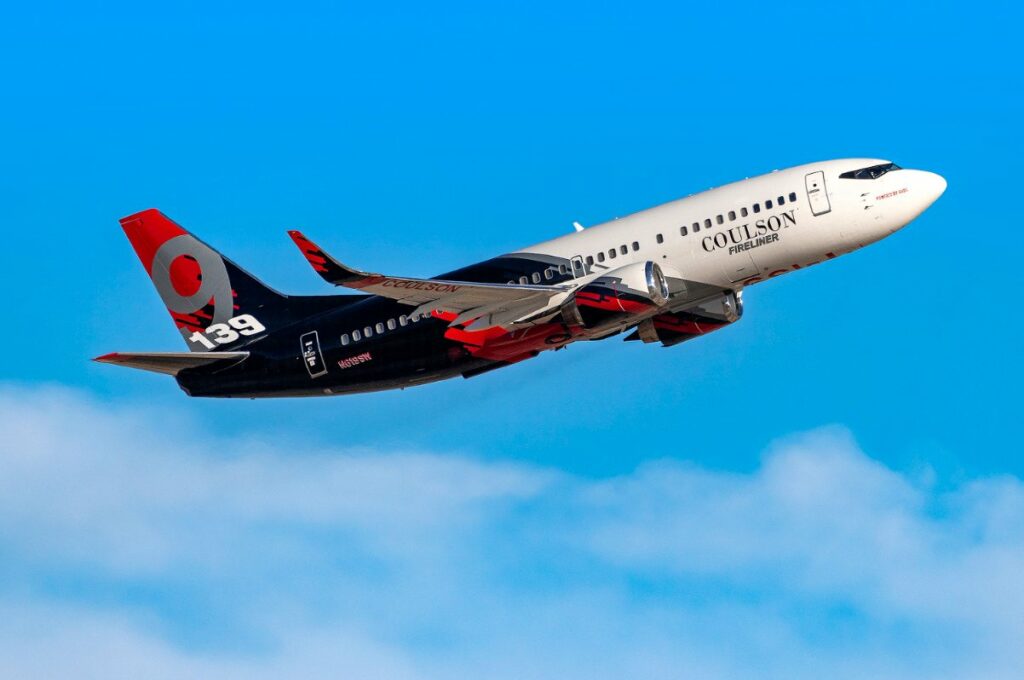LONDON – Following yesterday’s Boeing 737 Large Air Tanker crash in Western Australia, the Australian Transport Safety Bureau (ATSB) has provided an early update on the situation.
In a statement made on behalf of the ATSB, Chief Commissioner Angus Mitchell has acknowledged that the remoteness of the crash site together with the fact that the area is bushfire affected has limited understanding of the nature of the accident so far.
Clearly it is still early days for the investigation, however what is known is that “the accident occurred after the aircraft had conducted a second retardant drop on the fire.”
“Thankfully the crew were able to self-extract from the aircraft and were essentially uninjured,” stated Mr Mitchell.
The statement goes on to say that this is the first serious accident involving a Boeing 737 aircraft in Australia, and the second involving a large air tanker firebombing aircraft.
The accident aircraft was formerly operated in the United States as a passenger airliner before being extensively modified by the operator for its aerial firefighting role.

No link to previous accident
in January 2020, the operator Coulsen Aviation suffered the loss of a C-130 air tanker while engaged in aerial firefighting operations in the Snowy Mountains region of New South Wales.
Three US crew members died in the 2020 accident.
With respect to yesterday’s 737 tanker crash, the ATSB advises that there is nothing to suggest this accident has wider implications for the global Boeing 737 airliner fleet.
The Safety Bureau also points out that “it is also too early to suggest any kind of link to the C-130 large air tanker accident near Cooma in NSW in January 2020 that the ATSB also investigated.”
An experienced team of transport safety investigators from both the Bureau’s Perth and Canberra offices will now conduct the evidence collection phase of this investigation, including investigators involved in the 2020 C-130 large air tanker accident.
The initial focus of the investigation is to interview both pilots and witnesses, plus to seek to recover and download the aircraft’s flight data recorder and cockpit voice recorder, once it is safe to do so.
With respect to the crash site conditions and location, the ATSB notes the following: “As you can imagine we expect the site to present its challenges to our investigators.”
“It is remote, an active fire ground, the aircraft is at least partially burnt, and aircraft wreckage can involve hazardous materials, so our investigators will take a cautious and measured approached to their onsite activities.”
“We expect to have investigators on site at the accident site for a number of days, arriving tomorrow, pending accessibility considerations.”
“There they will examine and map the accident site, recover the cockpit voice recorder and flight data recorder, and any other aircraft components we deem necessary for further examination in the ATSB’s technical facilities, back in Canberra.”
Investigators will also map the accident site with a drone.
The ATSB will publish a detailed report at the conclusion of the investigation.









